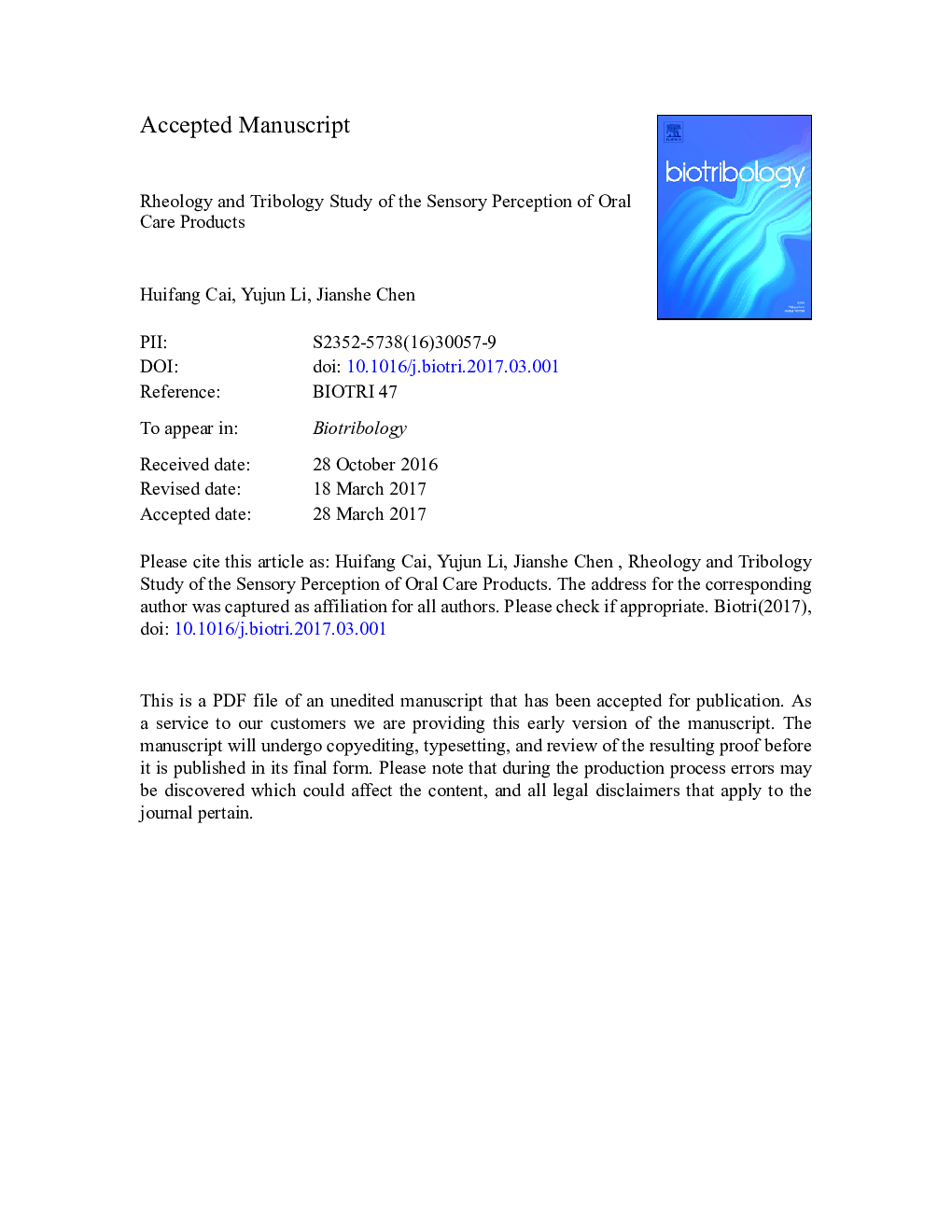| Article ID | Journal | Published Year | Pages | File Type |
|---|---|---|---|---|
| 5011141 | Biotribology | 2017 | 36 Pages |
Abstract
The texture sensations is an important contribution to consumers' acceptance and preference of oral care products (e.g. toothpaste). A product's rheological properties and its oral tribological behaviour have strong influences on sensory perception, but the mechanisms underpinning such processes are still largely unknown. In this work, a simple experimental set up was used to measure lubricating properties (friction coefficient) as a function of speed for toothpaste samples and their mixtures with either artificial saliva or water. Particle size distribution and rheological properties were also measured along with the lubrication properties. Sensory smoothness and granularity were assessed by a panel using both fingers and tongue. The lubricating properties show significant differences in the boundary regime giving effective discrimination of sample systems. Results from tribological measurements showed a strong linear correlation with the sensory smoothness obtained from taste panel. Further data analysis showed that both rheological properties (viscosity) and particle size distribution strongly influenced the lubrication behaviour and, therefore, contributes to smoothness perception. Results from this work show that combination of rheological and tribological techniques could be a feasible instrumental approach to assess sensory properties of oral care products.
Related Topics
Physical Sciences and Engineering
Engineering
Biomedical Engineering
Authors
Huifang Cai, Yujun Li, Jianshe Chen,
